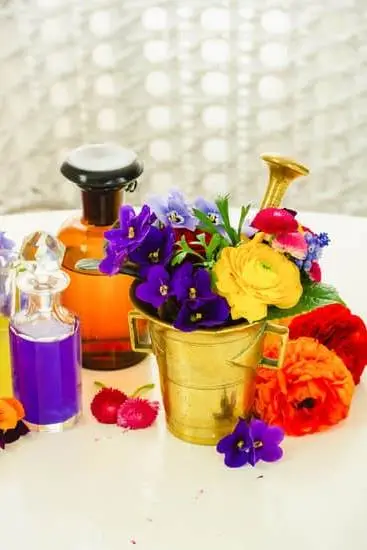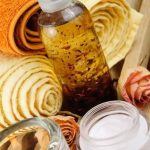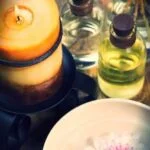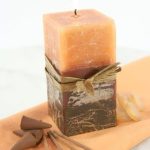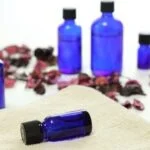Aromatherapy therapy has gained popularity in recent years as a holistic approach to health and wellness. In this article, we will explore the fundamentals of aromatherapy, including its history, benefits, and techniques. We will also address the myths and misconceptions surrounding aromatherapy, particularly in light of the popular show “Adam Ruins Everything.” Let’s delve into the science behind aromatherapy and discover how essential oils can contribute to both mental and physical well-being.
Aromatherapy has been practiced for centuries, with roots in ancient civilizations such as Egypt, China, and India. These traditional practices have evolved into modern-day aromatherapy, which combines age-old wisdom with contemporary scientific research. However, despite its growing popularity, aromatherapy has been the subject of skepticism and debunking attempts by popular media figures like Adam Conover. It is important to separate fact from fiction when it comes to incorporating aromatherapy into our lives.
Throughout this article, we will explore the benefits of aromatherapy on both a psychological and physiological level. From stress relief and relaxation to pain relief and healing, essential oils have been utilized for various therapeutic purposes.
Additionally, we will discuss different methods of applying aromatherapy, such as through diffusers, inhalation, and topical use. Whether you are new to aromatherapy or a seasoned enthusiast, this comprehensive guide will provide valuable insights into harnessing the power of essential oils for overall well-being.
The History of Aromatherapy
The use of essential oils for healing and therapeutic purposes can be traced back to ancient civilizations such as the Egyptians, Greeks, and Romans. The history of aromatherapy dates back thousands of years, with evidence of its use in medical practices and religious ceremonies. In ancient times, plant extracts and aromatic compounds were used for their medicinal properties and spiritual significance.
The practice of aromatherapy continued to evolve throughout history, with different cultures incorporating their own unique techniques and methods. In the 20th century, French chemist René-Maurice Gattefossé is credited with coining the term “aromatherapy” after experiencing the healing properties of lavender oil when he burned his hand in a laboratory accident.
Fast forward to modern day, and aromatherapy has become a popular holistic approach to health and wellness. It is no longer just considered an ancient or alternative practice, but has gained recognition in mainstream medicine and lifestyle trends. With an increased focus on natural remedies and complementary therapies, aromatherapy has found its place in spas, wellness centers, healthcare facilities, and even homes.
| Ancient Aromatherapy Practices | Modern Day Aromatherapy Trends |
|---|---|
| The use of aromatic compounds for medicinal purposes | Incorporation of essential oils in mainstream medicine |
| Spiritual significance of plant extracts in religious ceremonies | Rise in popularity of aromatherapy in spas and wellness centers |
| Cultural diversity in aromatherapy techniques | Integration of aromatherapy into daily health and wellness routines |
Adam Ruins Everything
Aromatherapy has been the subject of skepticism and misconceptions, and it has even been the target of a popular television show called “Adam Ruins Everything.” The show aims to debunk myths and misconceptions about various topics, including aromatherapy. While some of the information presented on the show may have validity, it’s important to understand that aromatherapy is a practice rooted in centuries-old traditions and has shown potential benefits for mental and physical well-being.
One of the main misconceptions about aromatherapy is that it is simply a placebo effect or pseudoscience. However, numerous studies have shown that inhaling essential oils can have measurable effects on the body and brain, such as reducing stress and anxiety levels. Additionally, essential oils like lavender and chamomile have been found to have sedative effects when inhaled, further supporting the notion that aromatherapy can indeed have therapeutic benefits.
Another misconception about aromatherapy is that it is only effective for relaxation and stress relief. While these are certainly common uses for aromatherapy, essential oils are also used for pain relief, improved sleep quality, and even as an alternative treatment for certain medical conditions. For example, peppermint oil has been shown to help alleviate tension headaches when applied topically, while eucalyptus oil is commonly used to alleviate symptoms of respiratory conditions when inhaled.
It’s important to approach any form of therapy or treatment with an open mind and to consult reputable sources for information. While “Adam Ruins Everything” may provide entertaining debunking of myths, individuals interested in incorporating aromatherapy into their wellness routines should explore reliable research on the topic to make informed decisions about its potential benefits.
The Science Behind Aromatherapy
Aromatherapy has been used for centuries as a natural and holistic approach to improving physical, emotional, and mental well-being. At the core of aromatherapy are essential oils, which are derived from plant extracts and have unique properties that contribute to their therapeutic effects. The science behind aromatherapy lies in the chemical composition of these essential oils and how they interact with the human body.
Chemical Components of Essential Oils
Essential oils are composed of various chemical compounds such as terpenes, alcohols, esters, and phenols. Each of these compounds has specific properties that contribute to the overall benefits of the essential oil. For example, terpenes have anti-inflammatory and antibacterial properties, while esters are known for their calming and sedative effects. Understanding the chemical composition of essential oils allows practitioners to tailor their use for specific purposes such as pain relief, stress reduction, or promoting relaxation.
Interaction With the Body
When inhaled or applied topically, essential oils can interact with the body through several pathways. Inhalation allows the aromatic molecules to travel through the olfactory system to the brain, where they can influence emotions and cognitive function. When applied topically, essential oils can be absorbed through the skin and enter the bloodstream, allowing their therapeutic properties to take effect throughout the body.
Benefits of Essential Oils
The benefits of essential oils are wide-ranging and include alleviating symptoms of anxiety and depression, reducing inflammation and pain, improving sleep quality, boosting immune function, and enhancing overall well-being. Research has shown that certain essential oils have antimicrobial, antioxidant, and anti-inflammatory effects. Additionally, many individuals find that using aromatherapy with essential oils helps them manage stress and improve their mood on a daily basis.
Understanding the science behind aromatherapy and essential oils is crucial in harnessing their full potential for health and wellness. By recognizing the chemical components of essential oils as well as their interaction with the body, individuals can make informed decisions about incorporating aromatherapy into their daily routines for various benefits such as stress relief, relaxation, pain management, or overall enhancement of physical and mental health.
Aromatherapy Techniques and Methods
When it comes to aromatherapy, there are several techniques and methods that can be used to experience the benefits of essential oils. Whether it’s for stress relief, relaxation, or physical wellness, understanding these different methods can help maximize the effectiveness of aromatherapy in your daily life.
Here are some common aromatherapy techniques and methods:
- Diffusers: Using a diffuser is one of the most popular ways to enjoy the benefits of aromatherapy. These devices disperse essential oils into the air, allowing you to breathe in the therapeutic properties of the oils. There are different types of diffusers available, including ultrasonic diffusers, nebulizing diffusers, and heat diffusers.
- Inhalation: Another method of experiencing aromatherapy is through direct inhalation. This can be as simple as adding a few drops of essential oil to a tissue or handkerchief and inhaling the aroma directly. You can also add a few drops of oil to hot water and inhale the steam, or use personal inhalers designed specifically for essential oil inhalation.
- Topical Application: Applying essential oils topically allows for direct absorption through the skin. It’s important to dilute essential oils with a carrier oil before applying them to the skin to prevent irritation or sensitization. Common areas for topical application include pulse points (such as wrists and temples), the back of the neck, and areas of muscle tension.
By understanding these different aromatherapy techniques and methods, you can tailor your use of essential oils to suit your individual needs and preferences.
Remember that while aromatherapy can have potential benefits for mental and physical health, it is not a replacement for professional medical treatment or therapy. Always consult with a qualified healthcare provider before using aromatherapy as part of your wellness routine.
Aromatherapy for Stress Relief and Relaxation
Aromatherapy has long been used as a natural method for promoting relaxation, reducing stress, and improving mental well-being. The use of aromatic essential oils can have a powerful impact on our emotional state, helping to calm the mind and enhance our overall mood. From ancient practices to modern day techniques, aromatherapy has been utilized to support mental health in various cultures around the world.
The Psychological Impact of Aromatherapy
Aromatherapy works by stimulating the olfactory system, which is linked to the part of the brain that controls emotions and memories. When inhaling essential oils, the molecules travel through the nose and affect the limbic system, leading to feelings of calmness and relaxation. Certain scents like lavender, chamomile, and bergamot are known for their soothing properties and are often used in aromatherapy for stress relief.
Benefits of Aromatherapy for Mental Health
Research has shown that aromatherapy can be an effective tool for managing stress, anxiety, and even depression. The use of essential oils in aromatherapy therapy has been found to reduce cortisol levels (the stress hormone), lower heart rate, and improve overall mood. Additionally, incorporating aromatherapy into one’s daily routine can promote better sleep quality, which is crucial for maintaining mental wellness.
Incorporating Aromatherapy Into Daily Life
From using a diffuser at home to applying essential oils topically or creating DIY scented products, there are countless ways to incorporate aromatherapy into your daily life. Whether at work or during moments of self-care, taking a moment to indulge in the power of aromatherapy can provide much-needed relief from the stresses of everyday life.
By acknowledging its potential benefits for mental health and understanding its historical significance, we can fully embrace the power of aromatherapy therapy adam ruins everything misinformation about this therapeutic practice.
Aromatherapy for Physical Wellness
Aromatherapy has been used for centuries as a natural method to alleviate physical ailments and promote healing. Essential oils, the foundation of aromatherapy, have been recognized for their potential to relieve pain, reduce inflammation, and support the body’s natural healing process. Whether used in massage oils, compresses, or baths, essential oils can be an effective tool for managing various physical conditions.
Here are some common essential oils that are known for their pain relief and healing properties:
- Lavender: Known for its calming and soothing effects, lavender oil can help alleviate headaches and migraine symptoms when applied topically or inhaled through a diffuser.
- Peppermint: With its cooling sensation, peppermint oil is often used to relieve muscle aches, tension headaches, and even digestive discomfort when diluted and applied to the skin.
- Eucalyptus: This refreshing oil can open up the airways when inhaled and is often used to ease respiratory issues such as sinus congestion and bronchitis.
In addition to these popular essential oils, there are many others that can offer relief from specific types of pain. It’s important to note that while aromatherapy can be a valuable complement to traditional medical treatments, it should not be seen as a replacement for professional medical care.
When using aromatherapy for physical wellness, it’s crucial to understand proper dilution ratios and safe application methods. Essential oils are highly concentrated substances that should be handled with caution. Consulting with a certified aromatherapist or healthcare professional before using essential oils is advisable, especially if you have underlying health conditions or are pregnant.
As with any form of therapy or treatment, it’s important to gather information from reliable sources before incorporating it into your wellness routine. By understanding the potential benefits of aromatherapy for physical wellness and consulting with experts in the field, individuals can make informed decisions about integrating this practice into their holistic healthcare approach.
Incorporating Aromatherapy Into Your Daily Routine
Aromatherapy has been used for centuries as a natural way to promote relaxation, improve mood, and enhance overall well-being. Incorporating aromatherapy into your daily routine can be an easy and effective way to experience the benefits of essential oils. Whether at home or in the workplace, there are several simple tips for using aromatherapy in your everyday life.
One popular method for incorporating aromatherapy into your daily routine is through the use of diffusers. These devices disperse essential oils into the air, allowing you to enjoy their aromatic benefits throughout the day. Simply add a few drops of your favorite essential oil to a diffuser and let it run while you work, relax, or sleep. This can create a calming and uplifting atmosphere in any space.
Another way to use aromatherapy at home or work is through inhalation. This can be as simple as putting a drop of essential oil onto a tissue or handkerchief and inhaling the scent throughout the day.
You can also add a few drops of essential oil to a bowl of hot water and breathe in the steam for a soothing effect. Whether you prefer uplifting scents like lemon or lavender, or more grounding scents like cedarwood or frankincense, inhalation is a quick and easy way to benefit from aromatherapy therapy.
It’s important to note that when using aromatherapy at work, it’s considerate to be mindful of others’ sensitivities and allergies. If diffusers are not appropriate for shared spaces, personal inhalers can provide an individualized approach to aromatherapy without impacting others. With these simple tips, you can easily incorporate the benefits of aromatherapy into your daily routine for improved mental and physical well-being.
Conclusion
In conclusion, while Adam Conover may have shed light on some misconceptions about aromatherapy therapy, it’s important to remember that there is still plenty of scientific evidence to support the benefits of aromatherapy. Essential oils have been used for centuries in various cultures for their healing properties, and modern research continues to uncover new applications for these natural remedies.
It’s crucial to approach aromatherapy with an open mind and a willingness to explore its potential in promoting overall wellness.
As we move forward, it’s essential to distinguish between the myths and realities of aromatherapy. Understanding the science behind how essential oils work and their proven benefits can help individuals make informed decisions about incorporating aromatherapy into their lives. Whether it’s for stress relief and relaxation or physical wellness, there are numerous techniques and methods for using essential oils that can be tailored to individual needs.
Ultimately, embracing the power of aromatherapy means acknowledging its potential while also being discerning about the information available. With an understanding of its history, scientific basis, and practical applications, individuals can harness the benefits of aromatherapy as part of their holistic approach to health and well-being. By overcoming misconceptions and delving into the wealth of knowledge surrounding aromatherapy, one can truly appreciate its therapeutic value in enhancing both mental and physical wellness.
Frequently Asked Questions
What Was the Last Episode of Adam Ruins Everything?
The last episode of Adam Ruins Everything was “Adam Ruins Little Bugs.” In this episode, Adam explores the world of bugs and debunks common misconceptions about them.
How Many Episodes Are There of Adam Ruins Everything?
There are a total of 65 episodes of Adam Ruins Everything across six seasons. The show originally premiered in 2015 and has covered a wide range of topics.
Are There New Episodes of Adam Ruins Everything?
As of now, there are no new episodes of Adam Ruins Everything being produced or scheduled for release. The show concluded its run with the final season in 2019, but all previous episodes are available for streaming.

Are you looking for a natural way to improve your health and wellbeing?
If so, aromatherapy may be the answer for you.

